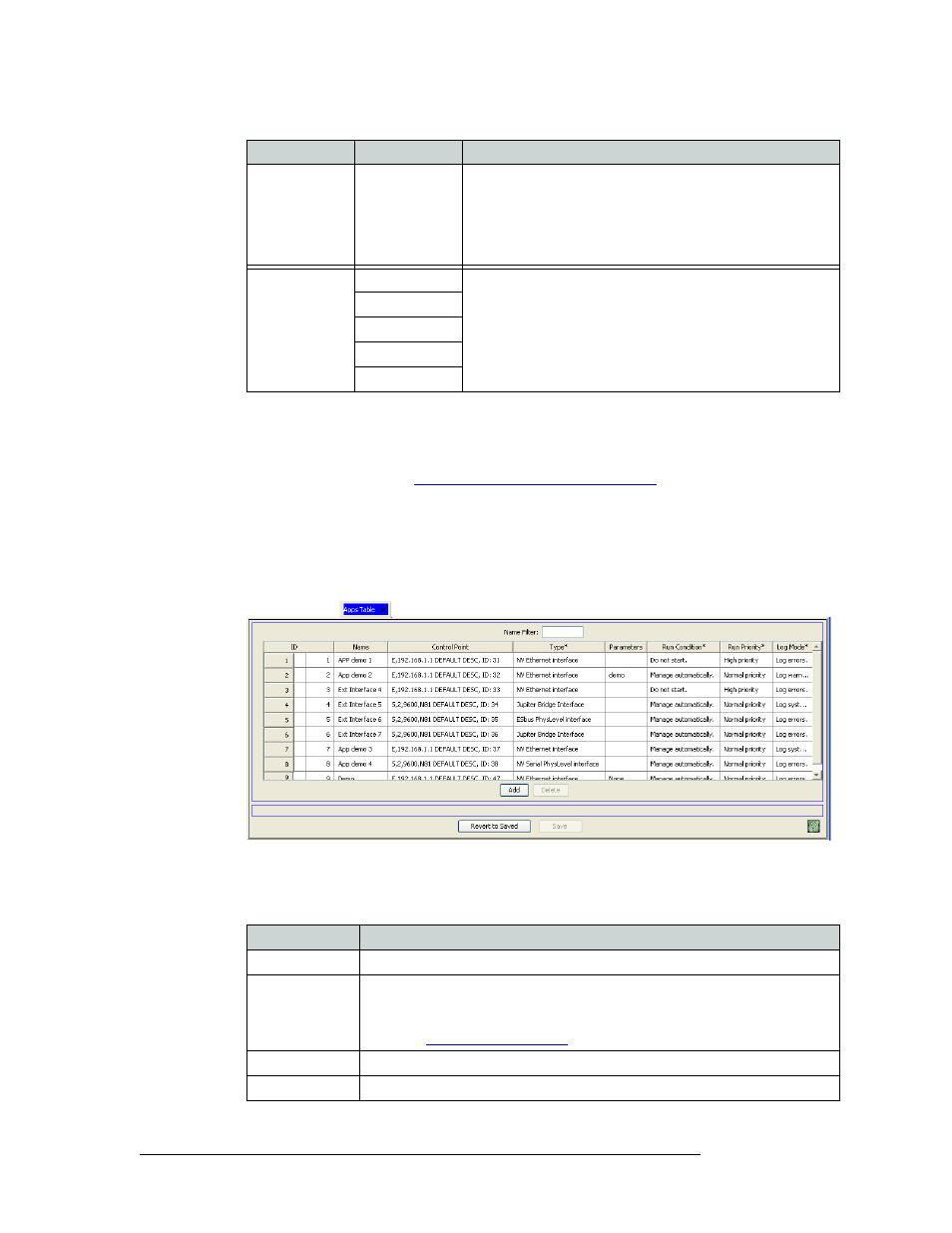External interfaces – Grass Valley NV9000-SE v.3.0 User Manual
Page 436

416
Rev 3.0 • 25 Mar 10
14. External Interfaces
Locating and Viewing Existing External Interfaces
4 Click
X
on the window title tab to close the page.
How to Locate and View Existing External Interfaces Using the ‘Apps’ Table
1 Launch NV9000-SE. (See
Launching and Exiting the Application
2 From the Navigation area, select the ‘Views’ pane and then ‘Apps’. The ‘Apps’ table appears,
as shown in Figure 14-8.
To narrow the list of external interfaces that display, enter the first characters of an external
interface name in the ‘Name Filter’ field. The list is automatically reduced to display only
external interfaces matching that character string.
Figure 14-8. Apps Table
3 Several columns display external interface information. Each row represents a single external
interface:
External
Interface
Connection Info
(displays if
Ethernet protocol
selected)
IP Address
The IP address for the Ethernet connection.
External
Interface
Connection Info
(displays if serial
protocol
selected)
Port
The settings for the serial port connection. Default settings
display unless otherwise changed.
Baud Rate
Parity
Stop
Data
Section
Field
Description
Section
Description
Name
The name for the external interface.
Control Point
The control point for the external interface.
Control points are serial or Ethernet ports in the NV9000 server through which
routers, panels, and other devices are connected. For more information on control
Parameters
Enable special features than the external application supports.
Run Condition
Select if the external application starts automatically or not.